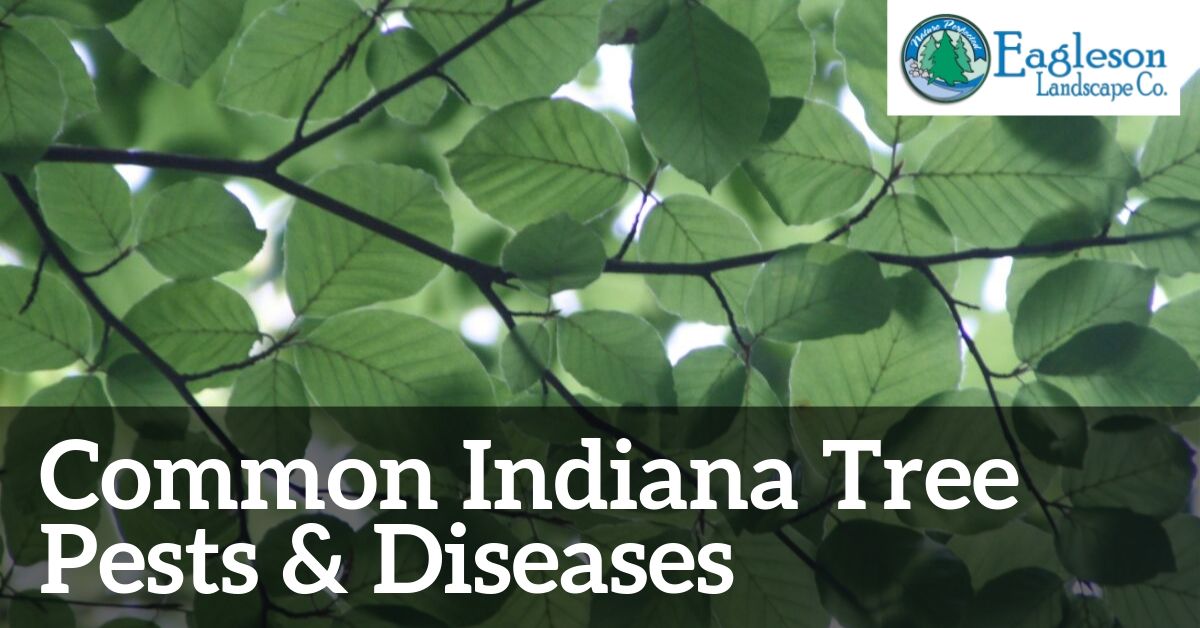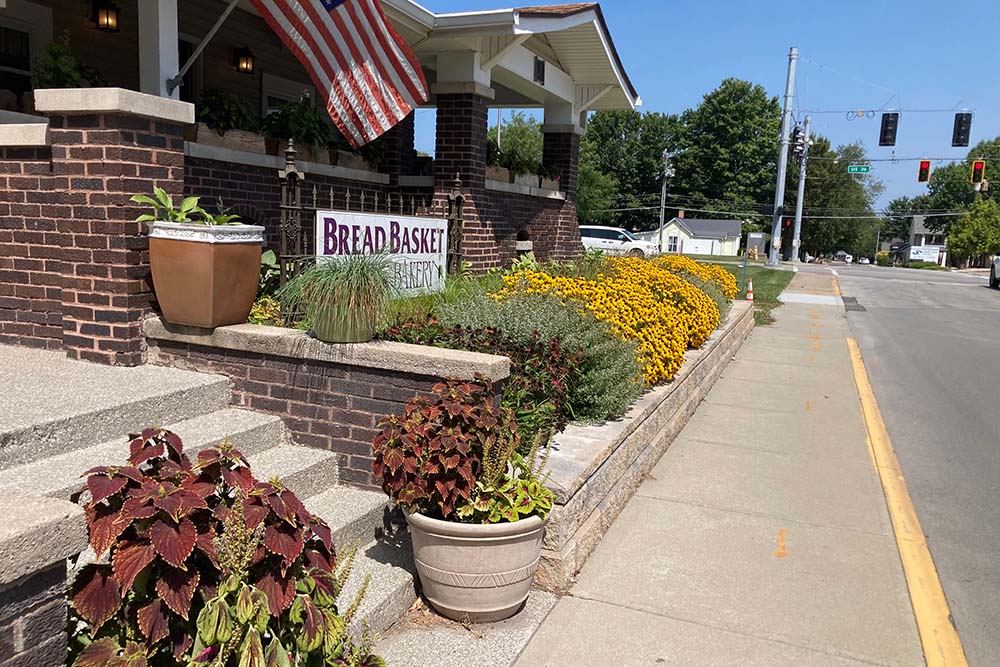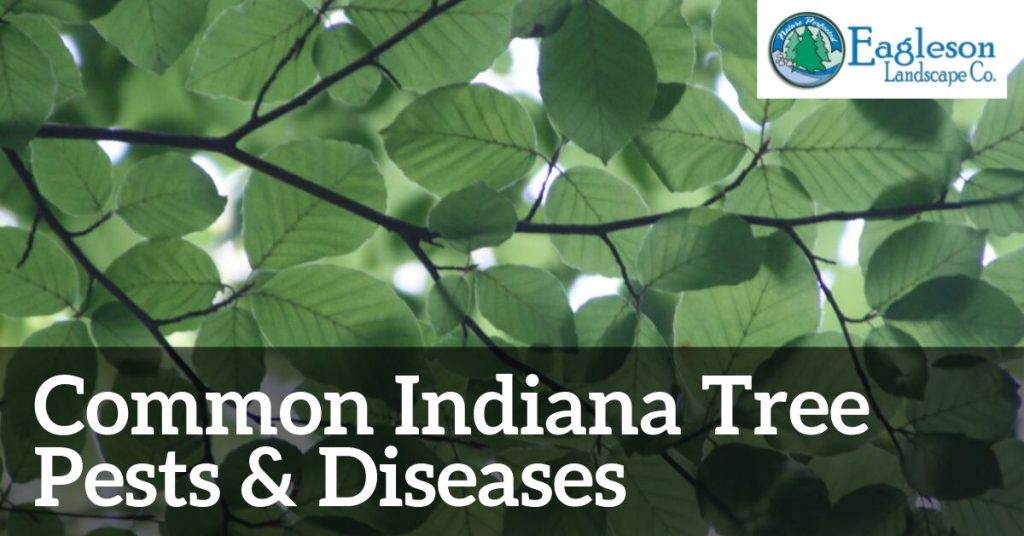
We are on a roll now with providing information about the things you have to watch out for in your landscape. Click here to see our recent blog about invasive species. Today we want to cover common Indiana tree pests and diseases, how to know you have them and how best to manage them. This list is not all-encompassing since we are focusing on the ones you are most likely to encounter here in Central Indiana. While some infestations you can manage yourself, we recommend bringing in a licensed arborist to help you deal with large issues. Safety is the concern, as well as using the right methods to eradicate the problem. Arborists have a specialized skill-set that will help ensure you are using best practices for your landscape.
The best way to prevent your trees from being negatively affected by an infestation is to keep an eye on them. If you see signs of distress you will want to act quickly so you can catch issues early. Your landscape is an investment that needs to be maintained!
Common Indiana Tree Pests:
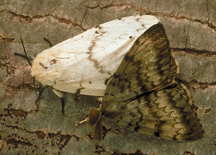
Gypsy Moth
The Gypsy moth itself does not cause an issue for a tree, it’s the larva. Once the eggs hatch those babies eat the leaves, which can cause damage or full defoliation. The moths like to nest in bigger hardwood trees like maple, oak, birch, elm, and hickory. The egg sacs can be seen on the trunk or branches but can be difficult to spot.
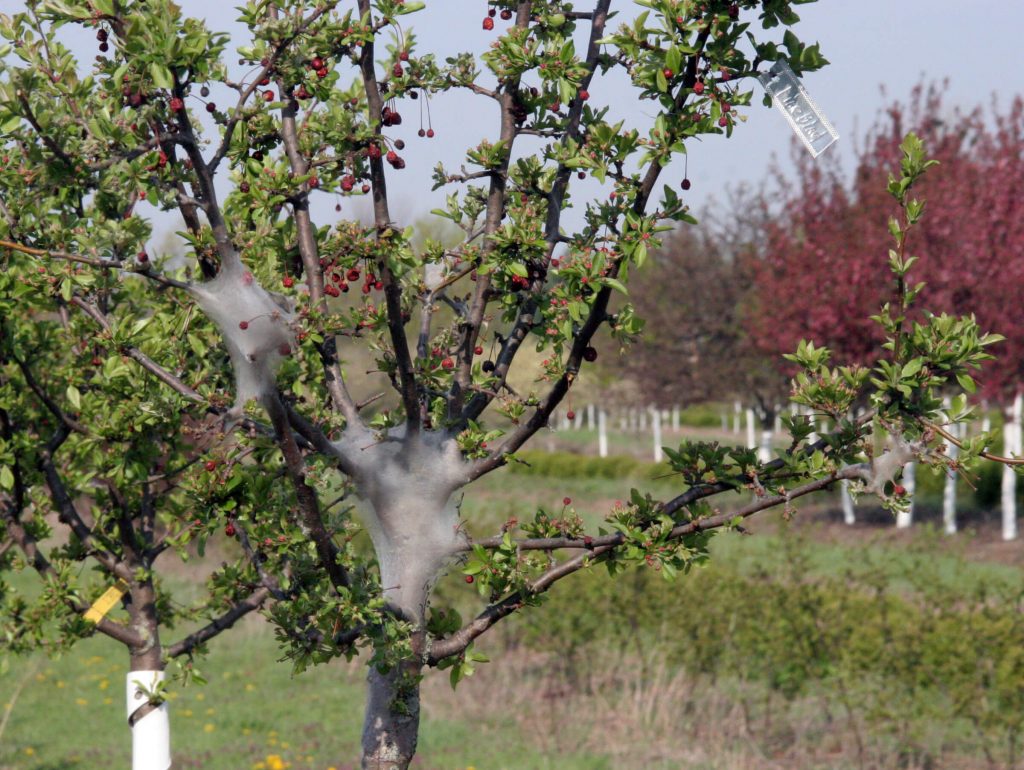
Tent Caterpillar
The silk tent built by this well-named pest is the most evident sign of an infestation. We have seen trees with just one tent, and then others completely covered with them. Their development seems to happen overnight! The larvae eat the foliage near their tents, so a large infestation can devastate a tree. If you have just a few tents close to the ground, you can remove the infested limb and keep an eye out for more. A large number of tents needs professional attention.

Bag Worms
These pests infect mostly evergreen trees but we sometimes see them on deciduous too. Like their name suggests, they create bags on the branches. If you see them, you can pluck them off, but do not just throw them on your lawn because the worms will crawl back to the tree. You will have to dispose of the bags in the trash or burn them.
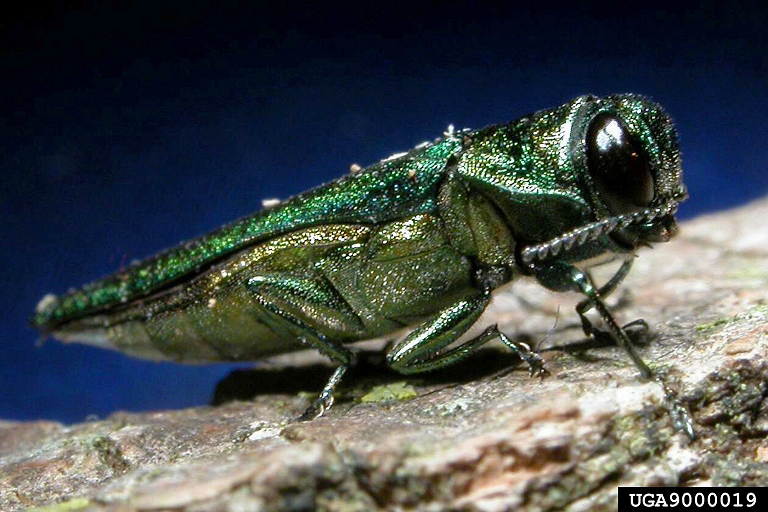
Emerald Ash Borer
Most likely you have heard about this invasive pest that has decimated Ash trees across the country. Unfortunately, if you have an Ash tree it is just a matter of time before it becomes infested. The best preventative is to have a licensed arborist do yearly pesticide treatments. You know you have borers when you see holes all over the truck made from woodpeckers trying to get at the bugs. This pest burrows around in the outside layer of the trunk, which is the part of the tree that is alive. So, they are destroying its lifeline. One rule of thumb is that if 1/3 of the canopy is gone, there is still a chance to save the tree. If more has been damaged, it will have to be removed. While treatment has come a long way, but there is no one-time fix that prevents this pest.
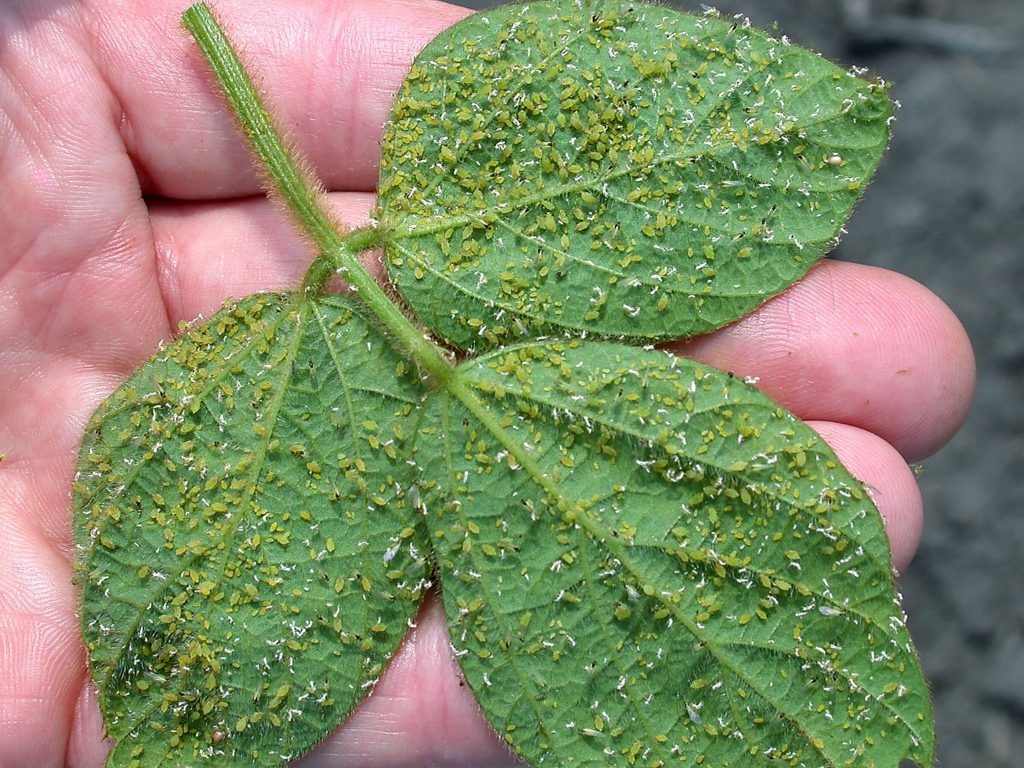
Aphids
You will find these little guys on your perennials and trees. They are sap-sucking insects who attach to the stem and suck the life out of a plant. They are visible to the eye, and usually set up camp on the underside of leaves. The telltale sign of aphids is the “honeydew” that they leave behind, a sticky, glossy substance that will make the leaves glossy and shine. This honeydew also attracts Sooty Mold, which will cause the leaves to turn black. You can pluck perennial’s stems or tree leaves with aphids off if you catch the infestation in time, but there are also pesticides to help remove them. As always, if you are using pesticides, read the label and use proper application.

Scale Insects
You know your tree has an infestation of scale when you see scabs, or bumps, on its branches. The insects burrow into the twig and the bumps are where they currently are or have been. They do the same thing to a tree as the Emerald Ash Borer plus they will leave behind Sooty Mold, a common sign of tree stress. A large infestation will kill a tree and its easy to let it get too far because the scabs are difficult to see. Watch for yellowing foliage or die back in some areas. We suggest treating it as soon as possible, though winter is a good time to address it before spring growth.
Common Indiana Tree Diseases

Anthracnose
This disease is very common in our area and is seen in a wide range of trees. It causes brown splotches on leaves, though it can vary by tree in how it first shows itself. Anthracnose will kill the tree if not taken care of.

Powdery Mildew
Another common disease, especially on older lilacs, Powdery Mildew looks like someone put powdered sugar on the leaves. This time of year we see a lot of this issue, where we are having hot, humid weather and plants are in a spot where they have poor airflow. The disease will eventually defoliate the tree, but it usually emerges late enough in the year that it does not permanently hurt it. In most cases, you don’t have to treat Powdery Mildew, though you can help prevent it by watering the leaves during a drier part of the day to clean them off– mildew does not like water. Proper planting and pruning will help too, allowing lots of light and air circulation.
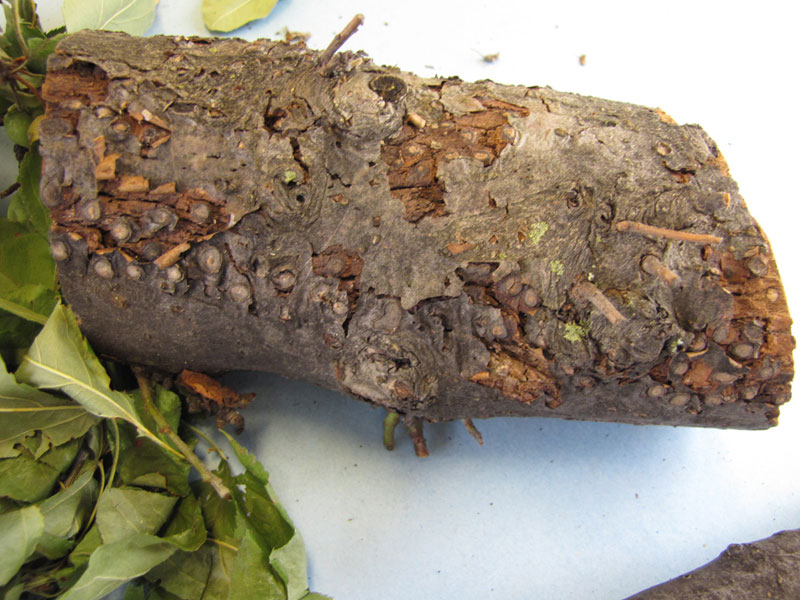
Cankers
This disease looks like wounds on tree branches and can cause dieback, stunted growth of branches, and bark discoloration and cracking. If you find this infection, you can cut the diseased branch back a few inches behind the wound with a clean implement. Clean the tool again so it does not move the disease to the next spot you cut (always a good maintenance tip!).

Sudden Oak Death
Even though Sudden Oak Death is not really an issue in Indiana, we want to talk about it since we recently had some locally sold rhododendron infected with this disease. If you bought a rhododendron this year, particularly from a local box store, you will want to go back to the store to see if their shipment was infested. If it was, you must get rid of your plant. This disease is not in Indiana yet so it is important that infected plants be removed before it spreads.

Crown Gall
The only way to tell if your tree has this disease is if you see a tumor on the trunk at soil level. These tumors are usually caused by some kind of trunk damage such as poor pruning or scrapes with a mower. An open wound is created and bacteria get in, creating a situation similar to cancer where uncontrolled cell growth occurs and a gall develops. This disease can happen to any tree but we see them more on fruit trees, as well as roses. There is not really a great way to treat it, so we suggest preventing it by being careful around the trunks of your tree!

Boxwood Blight
Boxwood Blight was a major problem a few years ago in Central IN and has wiped out huge swathes of boxwoods across the nation. It became difficult to find them in nurseries for a while. The problem is that the disease’s fungal spores last five years after they develop, so if you remove the infected plant, you cannot plant another one for 5 years. If your boxwood has black spots on its leaves and stems and dies very quickly, you will want to have a professional take a look at it.
The best way to prevent tree pests and diseases in your landscape is to keep them out in the first place. Thoroughly inspect any trees or plants you are buying, and if you find something, let the nursery know immediately. Even if you find a problem after purchase you will want to let the store know so they can help prevent further spread. Any good nursery should be doing the same checking over, but sometimes things fall through the cracks, so plan to do it too.

